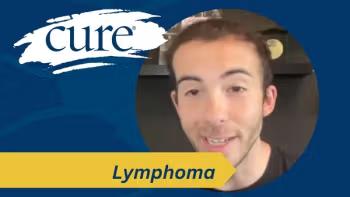
- Hematology Special Issue (2)
- Volume 1
- Issue 2
The Cutaneous Lymphoma Foundation Builds Bridges to Fight the Disease
The Cutaneous Lymphoma Foundation connects patients with guidance and resources for this rare cancer.
THE CORRECT TREATMENT AND team are key components to fighting cancer, and support is equally important. For patients with rare types of the disease finding the connections may be more challenging. Organizations such as the Cutaneous Lymphoma Foundation have been founded to address this need.
Cutaneous lymphomas are a subset of non-Hodgkin lymphoma that primarily affect the skin. Created by a newly diagnosed patient, a caregiver and a physician, the Cutaneous Lymphoma Foundation offers clinically vetted information about the disease.
“With a rare disease, people often feel isolated and alone,” Susan Thornton, CEO, tells CURE® in an interview. “We offer a place for them to come to, meet others, get individual support and help. We offer live educational programs that are now delivered through streaming technology so anyone can participate from the comfort of their home.”
For any disease a correct diagnosis is critical. But, unfortunately, cutaneous lymphomas are often misdiagnosed because they mimic other skin diseases, such as eczema, dermatitis and psoriasis. “Most community dermatologists have not seen a patient with this disease and may not consider it as a possible diagnosis given its rarity,” Thornton says. “A second opinion, with a specialist in the field of cutaneous lymphoma, is important. These specialists have seen many cases, know what to look for and what to ask about an individual’s history, work with the pathology report and put the puzzle pieces together.”
Although there is no curative therapy, people with a cutaneous lymphoma have treatment options. Topical and skin-directed treatment, such as ultraviolet B light, can be used for early stage disease, according to Thornton. She explains that with more resistant or aggressive disease treatment combinations with an oral drug or an infusion treatment are recommended.
“The next five or so years look very promising for us to have new treatments that are targeted, more effective with longer lasting positive outcomes,” says Thornton, who is living with cutaneous lymphoma.
Clinical trials are one of the ways advancements are being made. The Cutaneous Lymphoma Foundation works to help people understand the significance of clinical trials and get them into the right one if they are a good candidate. “We have a list of most of the open clinical trials on our website,” Thornton says. “(Patients) can search by geographic location. Although we don’t have every clinical trial listed, we do our best to make sure we have up-to-date information for most of the major clinical trials that are currently recruiting for participation.”
In addition, the foundation has an online learning center with clinical videos and content, resources and patient stories. It also hosts a monthly Facebook live interview series with guests that include physicians, researchers, insurance experts and patients.
“Today, this is a chronic disease that requires treatment over a long period of time for most people,” Thornton says. “Finding new ways to stop the disease, keep it from progressing and arresting its growth in advanced disease is critical to enabling people to live full lives.”
Articles in this issue
over 7 years ago
Through Thick and Thin: Monitoring Blood Clots With ETover 7 years ago
Striking a Match for Stem Cell Transplantsover 7 years ago
Taking a Shot to Treat Blood Cancers



